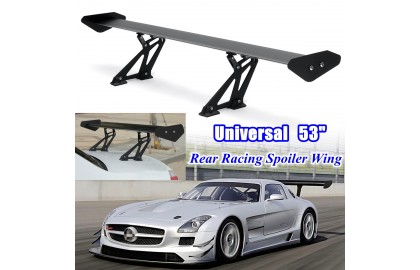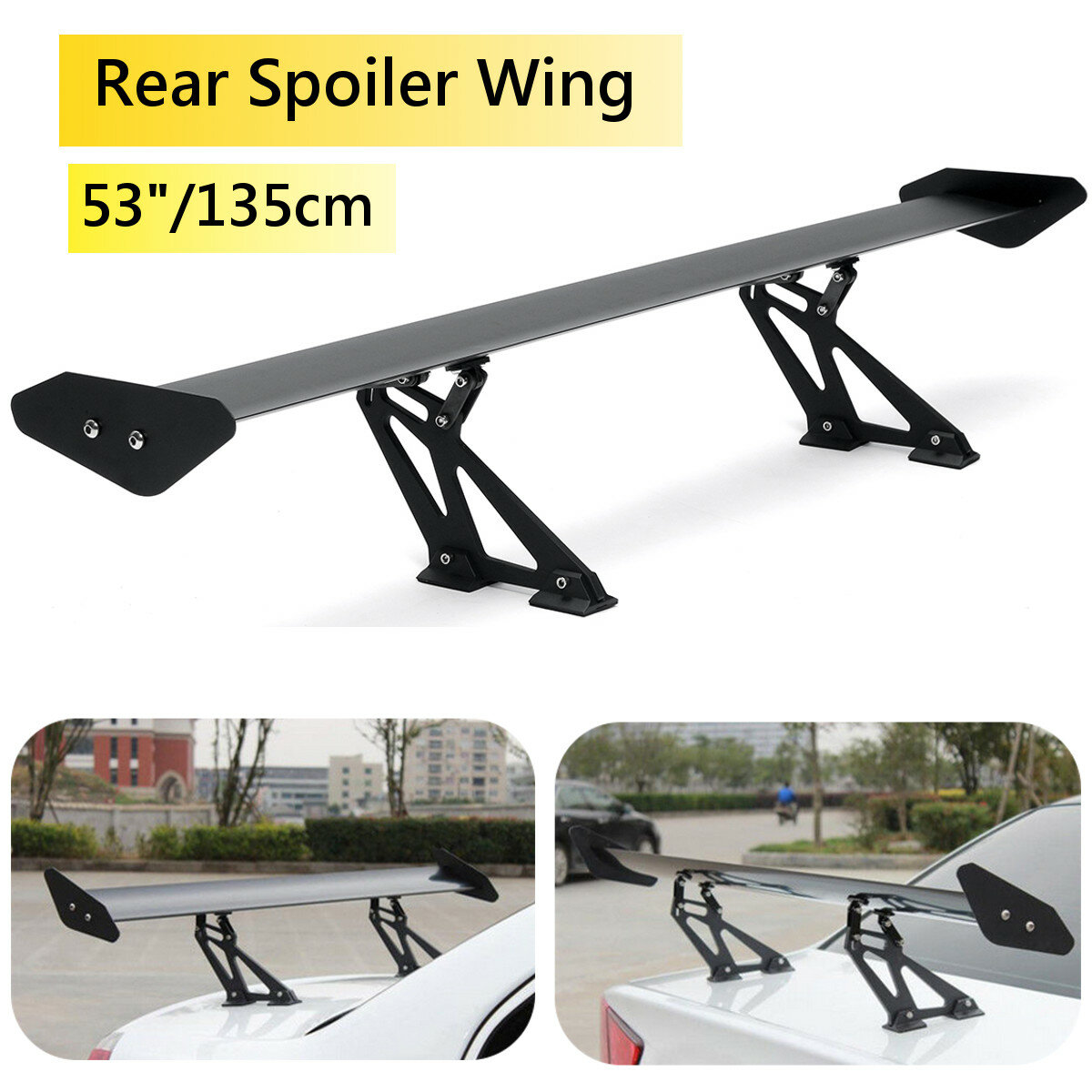What is the difference between Elecdeer spoilers, and how to select them?


Briefly talk about some aerodynamic principles related to racing cars, as well as the practical application of aerodynamics in vehicle design and tuning.
The mechanical forces generated by components such as the suspension mainly work at low speeds. The air force generated by the shape of the whole vehicle mainly acts at high speed.
On a track with both high and low-speed corners, teams usually set the handling characteristics of the vehicle in low-speed corners and high-speed corners through components such as suspension and rear wing. To get better results, you really should know a little bit about the aerodynamics of the car.
In the application of vehicle aerodynamics, the main consideration is to reduce the drag coefficient through the streamline shape, minimize the frontal windward area, and guide and utilize the airflow. Commonly used design methods are: fluid simulation simulation, clay model wind tunnel test, actual track test, etc.
And the tail that rises independently from the trunk lid is called the big tail. The original word is: Wing. Similar to the Spoiler, its role is mainly to sacrifice some forward driving resistance to increase the air downforce at the rear. Formula cars such as F1 or Time Attack models often use such large rear wings. On some formula cars, the rear half of the main wing of the rear high rear wing is bent upward at a large angle. Usually more than 20% of the air downforce of the entire rear wing group is produced by such a large-angle bending, and at the same time, about 50% of the driving resistance is also brought by such a large-angle bending. It can be seen that when there is no large rear wing, as the speed of the vehicle increases, the lifting effect of the aerodynamic force on the rear of the vehicle also increases significantly. When a rear wing with a 12° angle of attack (the angle between the equivalent axis of the airfoil and the direction of the airflow) is installed, the lift effect of the aerodynamic force on the rear of the car will also increase, but the increase is much smaller.
Less lift results in better rear tire grip.
The specific effect of the rear wing is related to many factors such as the section shape of the wing surface, the specific shape of the rear wing bracket, the installation height relative to the body, and the shape of the front roof.
In the absence of specific data and fluid modeling, its effect is not easy to determine. So we can prepare multiple sets of different rear spoilers for actual testing on the track.
The influence of the rear wing on some data such as vehicle speed and rear downforce is relatively easy to perceive.
Within the normal range, the greater the angle of attack of the rear wing, the greater its air downforce.
When the angle of attack is large to a value close to the vertical, the air downforce will decrease abruptly with the increase of the angle of attack, and the forward driving resistance will increase greatly with the increase of the angle of attack.
This is related to its steering angle and also to the turbulent area behind the main airfoil.
Some fins have a front and rear plate of equal thickness on the airfoil. This kind of rear wing has lower requirements for the matching model or installation, and is suitable for drivers who cannot choose a model-specific rear wing or have their own needs for the rear wing.
The wing surface of the special rear wing of some models is designed with a unequal thickness section.
Generally speaking, if the fins are accurately designed and installed correctly, fins of similar effective size and thickness will have better aerodynamic effects than fins of equal thickness.
Some fins have a horizontal airfoil.
For a model where the gap between the rear glass and the trunk lid is not very smooth, if the rear wing is mounted at a height slightly lower than the front roof, the result is likely to be reduced rear air downforce.
The larger the airfoil area, the greater the negative effect.
The specific situation requires specific modeling or test analysis, but generally this is the case.
For a track car or a car that wants to play with the rear wing seriously, it is important to choose a set of rear wing with adjustable wing angle of attack.
Before installation, it is impossible to confirm what kind of effect the rear wing that I bought will eventually bring. Adjustable is the most effective way to reduce trial and error time and trial and error costs.
Moreover, the angle of attack of the airfoil often needs to be adjusted under the conditions of different tracks, different suspension and suspension settings, different tires, and different power.
Why are some fins connected to the airfoil with brackets at the bottom, and some tails are connected to the airfoil with brackets above? The specific situation still needs modeling analysis or wind tunnel testing.
But in general: for carefully designed unequal-thickness airfoils, the lower surface will contribute more to the aerodynamic force than the upper surface. Therefore, choose the hanging bracket to make the lower surface of the airfoil as clean and flat as possible. However, the impact on the local airflow between the Y-plane projection and the intersection of the airfoil depends on many factors such as the roof, rear glass, and side of the body. The best way to tell is either fluid modeling or wind tunnel testing.
combined wing
The design and testing of composite wings are much more complicated than that of monolithic wings. Put some small airfoils together reasonably to form an airfoil group with a larger equivalent windward angle of the overall shape and a smaller angle of each airflow channel. Such a combined wing can have higher aerodynamic efficiency than an ordinary monolithic wing. Usually, the small airfoil added in front of the main airfoil can improve the aerodynamic effect under the condition that the overall angle of attack of the airfoil group remains unchanged; the small airfoil added behind the main airfoil can reduce the effort required to produce such aerodynamic effect driving resistance. The nearly vertical airfoils at the left and right ends of the tail are also components that can increase the effective width of the main airfoil of the tail, thereby improving its aerodynamic efficiency.
Elecdeer offers a full range of spoilers for you to choice.
